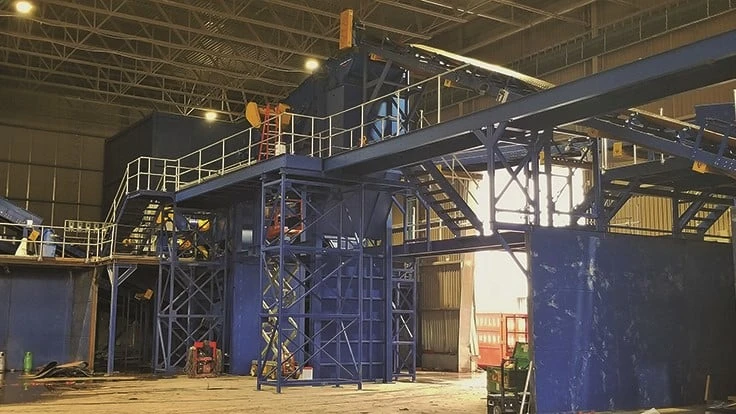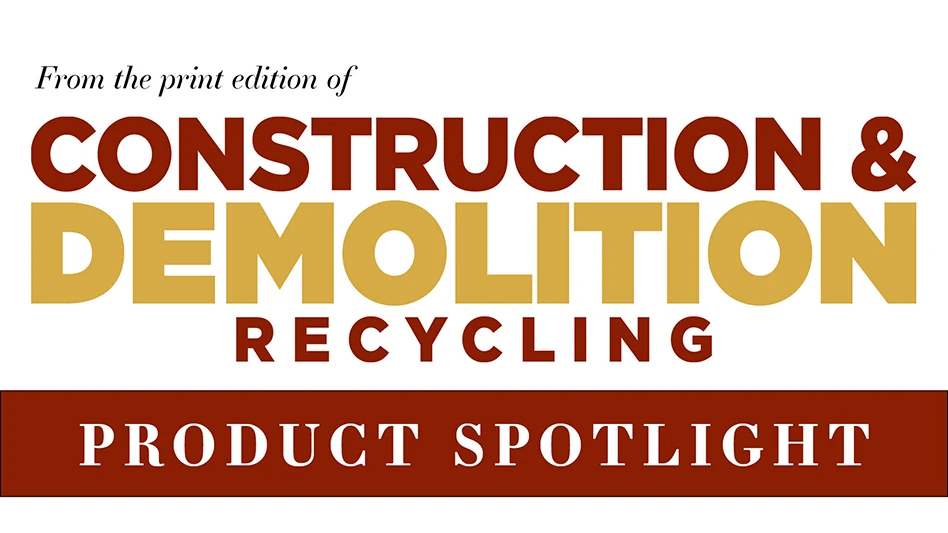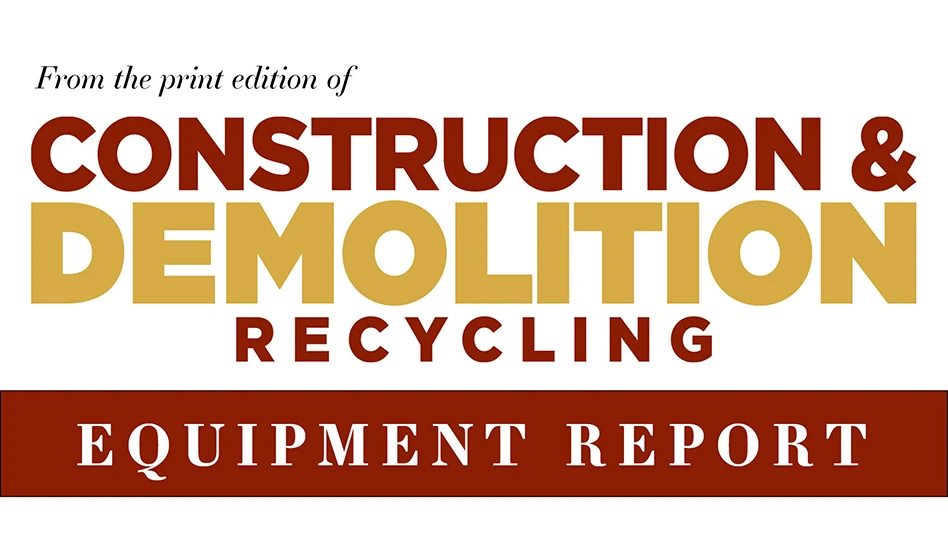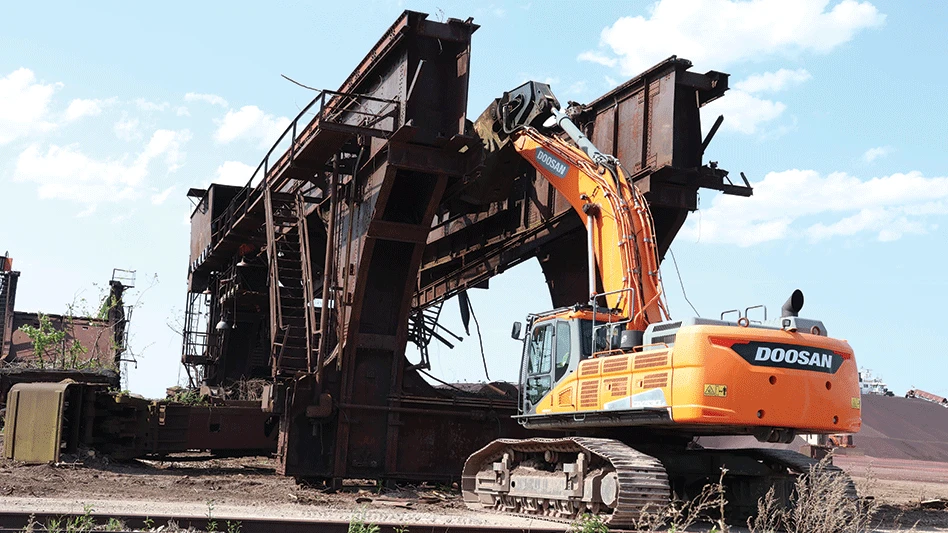
Photos courtesy of Sherbrooke OEM
Every recycler knows that the success of their operation is wholly dependent on the quality and efficiency of their sorting processes.
Melimax, a construction and demolition (C&D) recycler based in Chateauguay, a suburb of Montreal, had been struggling with efficiency issues at their facility in recent years thanks to lackluster sorting system performance that required several passes for the same material and a large number of manual sorters.
“We had quite a few issues with our old system, but the main pain points were the double and triple handling of the material to bring it up to purity standards, while having an enormous amount of pickers. We were aiming to decrease our number of pickers as much as possible while having a ‘one in, one out’ system where whatever came into the system came out as a final product or trash,” Mario Landry, president and owner of Melimax, says.
At the beginning of 2020, Landry began consulting with Sherbrooke OEM about possible solutions for these issues. According to Billy Brasseur, marketing manager at Sherbrooke OEM, the company made the proposition to implement new sorting technology at the Melimax site to increase their recovery rate of both materials exceeding 2 inches in size and fines material, as well as reduce labor costs.
Skeptical at first, the facility’s management quickly became enthusiastic when presented with the first technical sketch and the financial provisions of the project. According to Brasseur, Sherbrooke OEM mapped out the entirety of the project and shared plans in great detail, not only on the technical side, but also regarding the financial implications of the project centered on improved recovery rates.
After initial discussions that allowed the company to see the value in upgrading the site’s equipment, Melimax signed off on a total sorting system overhaul.
Manufacturing and design of the system began in May 2020. Installation commenced towards the end of June and was completed by early October of last year. Melimax began operations with the new system as soon as installation was finished.
According to Brasseur, “The system was built from scratch. We did not use anything from the old system. The core difference between the system’s new equipment, however, was the implementation of optical sorters as well as various equipment to sort the fines portion of the material.”
A vision thing
Up until recently in the C&D universe, only sizeable pieces of wood could be easily recovered, Brasseur says. That has changed along with the advent of more sophisticated sorting methods.
Brasseur says in order to help Melimax better recover its wood, Sherbrooke OEM advocated introducing optical sorters, which had been proven successful at other C&D sites.
Brasseur says optical sorters are ideal for this application because they have the ability to perform hundreds of thousands of ejections every hour. This method of sorting has a capture rate between 95 and 98 percent, the company says.
“Now, every piece that is larger than 1/8 inch in size is recoverable, which represents a huge step forward, as it now allows the recovery rate of wood to exceed 95 percent in C&D facilities,” he says.
According to Brasseur, the ability of optical sorters to differentiate between desirable and undesirable material is one of the main selling points of the system.
“There will always be unwanted material that is ejected with the desired material. We call this the dragging factor, and it is not often considered when talking about sorting, when in fact it has a substantial effect on both capture rate and purity of your material. The dragging factor is caused by the fact that unwanted material is either too close to the desired material or simply attached in some way to the desired material.”
Brasseur says when programming the ejection parameters of the machines used at Melimax, the company made sorting out some of these unwanted materials a priority.
“By replacing quality control done manually with optical sorters, it was possible to increase the quality of the wood, as well as sort out the melamine, embossed panels and plastic, which allowed the production of two distinct wood grades with interesting value,” he explains.
Feeling fines
When it came to treatment of the fines material, Sherbrooke decided to design the system in a way it had been doing for years in the southern parts of the United States, which is to remove the 1/8 inch fines from the rest of the 0- to 2-inch portion of material recovered. This was done to recover not only the wood in this fraction, but also the aggregates, which represented a substantial portion of the material.
“The startup of the Melimax facility made us quickly realize that [separating the 1/8 inch fines from the 0- to 2-inch portion] reduced the total volume of the 0- to 2-inch material from 30 percent to less than 15 percent,” Brasseur says. “Furthermore, observations to this day continue to demonstrate that there is just as much aggregate in the 0- to 2-inch fraction than in the 2 inches and above portion, which is not negligible considering that [that portion of the 0- to 2-inch material] is not usually recovered at all.”
Landry says that thanks to the improvements of its sorting system, Melimax is now able to process 50 tons per hour, averaging between 400 tons to 800 tons a day. Not only have improvements at the site enabled better recovery of materials, Landry says the new system has helped the company better market its products.
“The first improvement we saw was that we got our pickers down to five from our initial number of 25—which represented a major expense for us. Not only that, but we get better quality in our products with the Sherbrooke OEM system since it’s fully automated. We’ve also seen an increase in our uptime and our throughput per hour,” Landry says. “Perhaps the biggest benefit we have with this system is that fines materials are sorted. Being able to retrieve both wood and aggregates from that fraction has had a big impact for us.”
This article originally appeared in the March/April issue of Construction & Demolition Recycling magazine. The author is the editor of Construction & Demolition Recycling magazine and can be contacted at aredling@gie.net.
Latest from Construction & Demolition Recycling
- Deeper Insights: Lincoln Young
- Greenwave Technology pares back losses in Q3
- Cielo again defers annual meeting; cites postal strike
- CDE plant gets to work in Australia
- ESAB unveils new cutting torch models
- School district in Ohio approves 3 demolition projects
- RMDAS and Davis Index numbers portray stalled ferrous market
- By the Numbers





